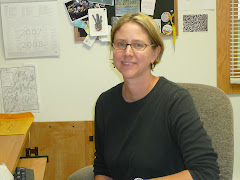
Several folks have asked, “How’s Slovakia?”…. well, I really wouldn’t know. But I am learning about Slovenia (in red in the map above).
For those of you out there (like myself at first) who know nothing about Slovenia (and confuse it with Slovakia) here’s just a bit of information:
Slovenia is a nation of just over 2 million people bordered by Italy, Austria, Croatia, and Hungary. It is only approximately 7,800 square miles, about the size of New Jersey. Despite its small size, Slovenia is incredibly diverse: snow-capped mountains and alpine rivers in the north, rolling plains full of hops-producing fields to the east, and the beautiful Mediterranean coast on the west. By law, Slovenia must be kept at least 56% forested. The rest is dotted with about 83 square miles of vineyards – which accounts the all the great inexpensive wines available!
Slovenia was the first of the former Yugoslav Republics to declare its independence. In 1990, 88% of Slovenia’s population voted for independence, and on June 25, 1991, the Republic of Slovenia declared its independence. A nearly bloodless 10-day war with Yugoslavia followed, until Yugoslav forces withdrew. Slovenia has been a member of the UN since May 1992, and officially a member of NATO in 1994
Slovene is the official language, but many people understand English, German, Serbo-Croatian, Italian, and Hungarian. Ljubljana (pronounced: Loo – bli – ana) is the capital with approximately 300,000 people. We have visited the capital twice now and both times are delighted to find ourselves in such a charming historical city. Maribor (where we are living) is in the Northeastern part of the country and is the second largest city.
Maribor is an interesting old city. Parts are extremely modern and developed and some parts seem to be a step back in time. The history is rich and long here – apparently continuous human settlement since the bronze age (1600 B.C.). The square near our apartment has witnessed speeches by Adoph Hitler (Maribor was part of the southern expansion of the Axis invasion) and two popes. Old cobbled streets and pedestrian walkways lined with plenty of outdoor cafes and markets create a very appealing atmosphere. We are really enjoying exploring this interesting town. Maribor boasts the oldest grape vine in the world (400 years old and still produces grapes for wine) and a wine cellar that runs under much of the city.
Let me know if you have any questions about Slovenia – we are trying to learn all that we can.
For those of you out there (like myself at first) who know nothing about Slovenia (and confuse it with Slovakia) here’s just a bit of information:
Slovenia is a nation of just over 2 million people bordered by Italy, Austria, Croatia, and Hungary. It is only approximately 7,800 square miles, about the size of New Jersey. Despite its small size, Slovenia is incredibly diverse: snow-capped mountains and alpine rivers in the north, rolling plains full of hops-producing fields to the east, and the beautiful Mediterranean coast on the west. By law, Slovenia must be kept at least 56% forested. The rest is dotted with about 83 square miles of vineyards – which accounts the all the great inexpensive wines available!
Slovenia was the first of the former Yugoslav Republics to declare its independence. In 1990, 88% of Slovenia’s population voted for independence, and on June 25, 1991, the Republic of Slovenia declared its independence. A nearly bloodless 10-day war with Yugoslavia followed, until Yugoslav forces withdrew. Slovenia has been a member of the UN since May 1992, and officially a member of NATO in 1994
Slovene is the official language, but many people understand English, German, Serbo-Croatian, Italian, and Hungarian. Ljubljana (pronounced: Loo – bli – ana) is the capital with approximately 300,000 people. We have visited the capital twice now and both times are delighted to find ourselves in such a charming historical city. Maribor (where we are living) is in the Northeastern part of the country and is the second largest city.
Maribor is an interesting old city. Parts are extremely modern and developed and some parts seem to be a step back in time. The history is rich and long here – apparently continuous human settlement since the bronze age (1600 B.C.). The square near our apartment has witnessed speeches by Adoph Hitler (Maribor was part of the southern expansion of the Axis invasion) and two popes. Old cobbled streets and pedestrian walkways lined with plenty of outdoor cafes and markets create a very appealing atmosphere. We are really enjoying exploring this interesting town. Maribor boasts the oldest grape vine in the world (400 years old and still produces grapes for wine) and a wine cellar that runs under much of the city.
Let me know if you have any questions about Slovenia – we are trying to learn all that we can.


No comments:
Post a Comment